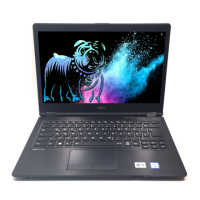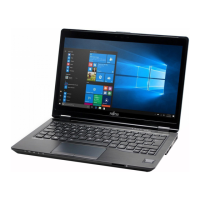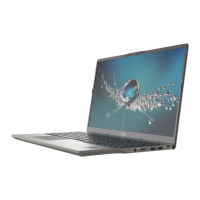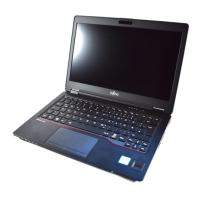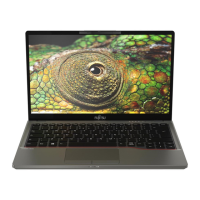Working with the no tebook
► C omplete the removal, see chapter "Finishing compone nt removal", Page 65.
Using the energy saving functions
EnergyEnergyBattery
The notebook uses less pow er when the available energy-saving functions are used. You will
then be able to work longer when using the battery before having to recharge it.
The energy efficiency is increased and environmental p ollution is reduced.
By choosing the best power options, you can make signi ficant savings and
at the same time help protect the environment.
When you fold down and close the LCD screen, depending on the setting in Windows,
the notebook automatically enters a power saving m ode.
We recomm end the following settin gs:
Function Operating on AC power Operating on battery power
Turn off monitor After 10 minutes After 5 minutes
Turn off hard disk(s) After 15 minutes After 10 minutes
Energy saving (S3) After 20 minutes After 15 minutes
Hibernate mode (S4) After 1 hour After 30 minutes
► Set t he energy saving functions in your Control Panel.
► Set the screen sav
er in your Control P anel.
or
► R ight-click on th e desktop. Activate the screen s aver by clicking on Personalize – Change
Screen Saver.
If you need further information about an option, you can get help with most
settings by pressing
F1
to open the Micro so ft Help.
When the not
ebook is in energy saving mode, the following must be remembered:
During ener
gy saving mode , open data i s h eld in m ain memory or
in a swap fil
e on the hard disk.
Never swi
tch the notebook off while it is in an energy saving mode. If the built-in battery
is nearly
flat, close all open files and do not go into energy saving mode.
If you do not intend to use your notebook for a long period of time:
► Exit energy saving mode if necessary by moving the mouse , making an entry at the keyboa rd
or by switching on the notebook.
► C lose all opened programs and completely shut down the notebook.
36 Fujitsu
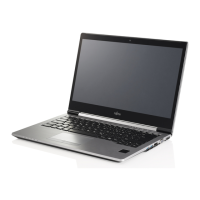
